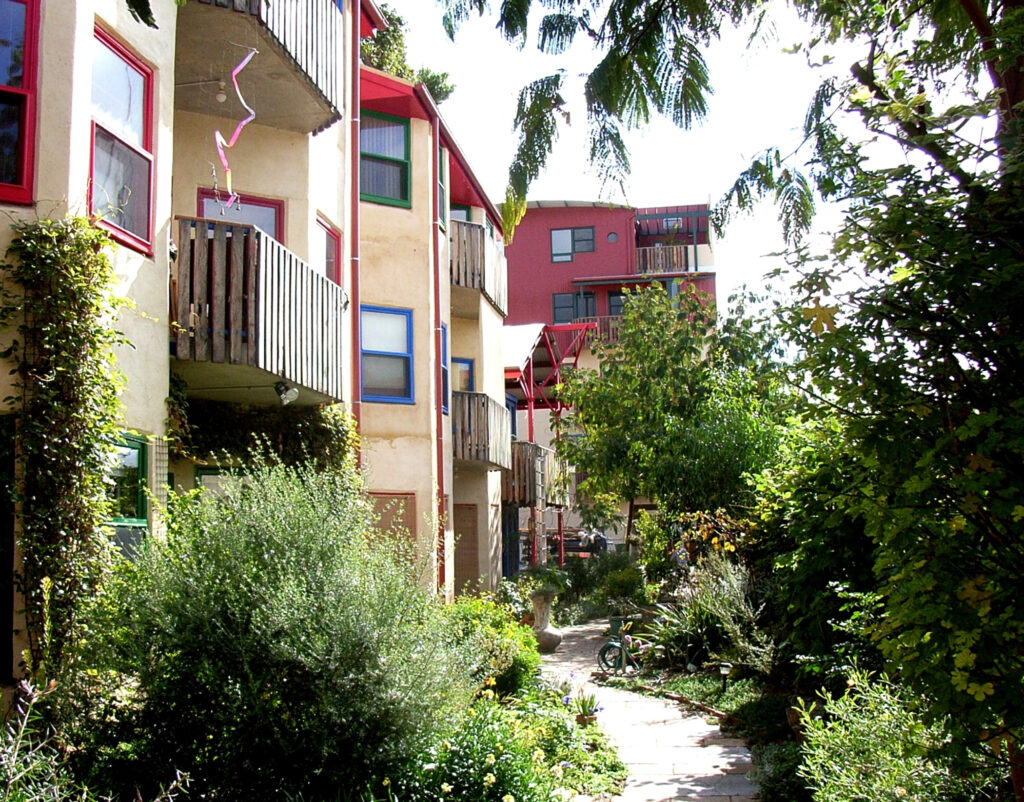
Christie Walk – a model ecocity development. Photo: Effie Best 
People-powered urban ecology. Photo: Jo Thomas 
Ecological design is immediately apparent. 
Extensive greenery shades homes in summer months. 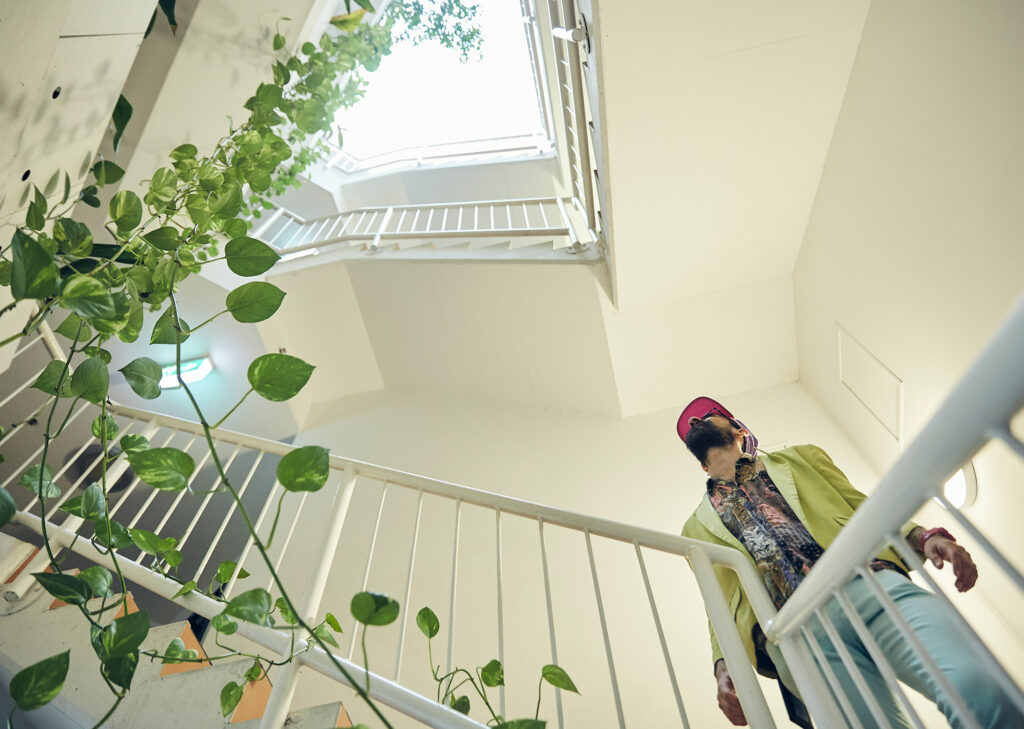
A vented atrium greatly aids temperature stability. 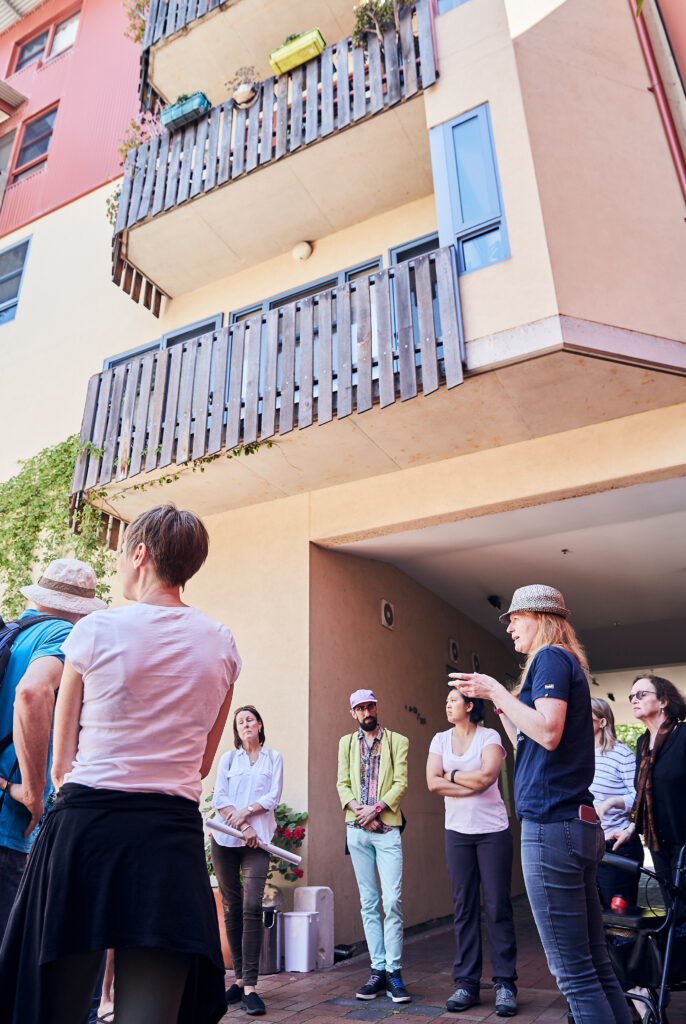
Thousands of people have taken part in Christie Walk guided site tours. 
An attractive spiral staircase is compact and provides a natural ventilation chimney effect. 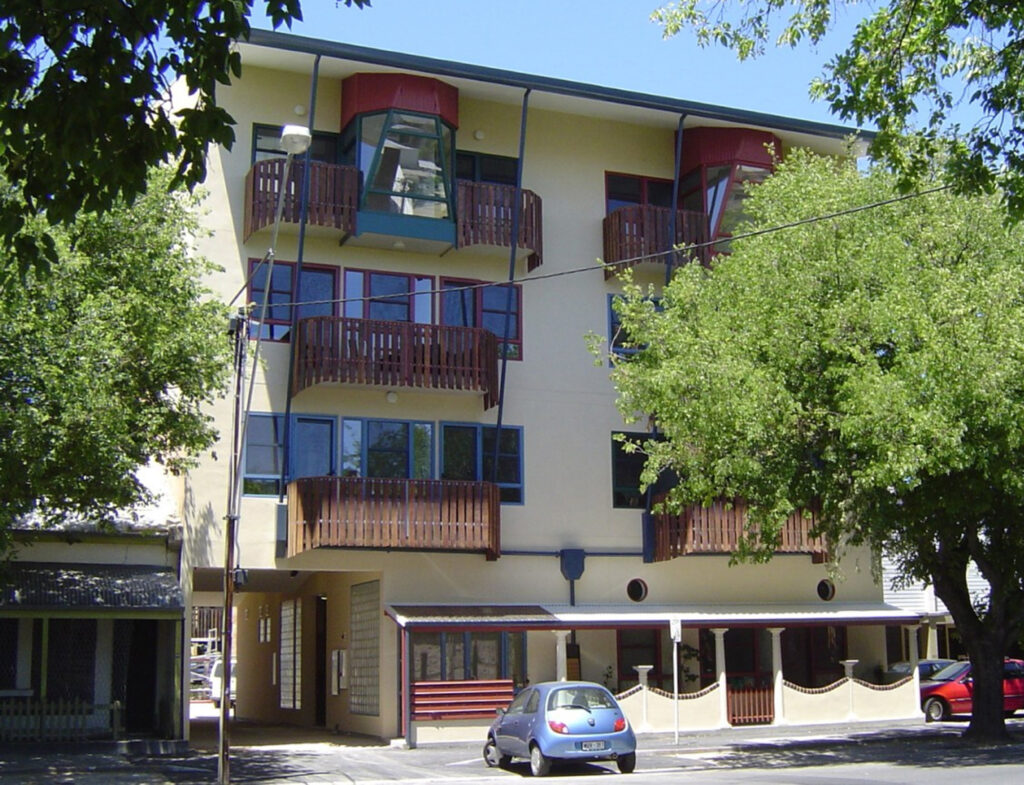
Christie Walk frontage on Sturt St, Adelaide. Photo: Effie Best 
The striking mural tells the story of the sustainability features of Christie Walk. 
Hebel block external walls combined with rammed earth inner walls provide temperature stability. 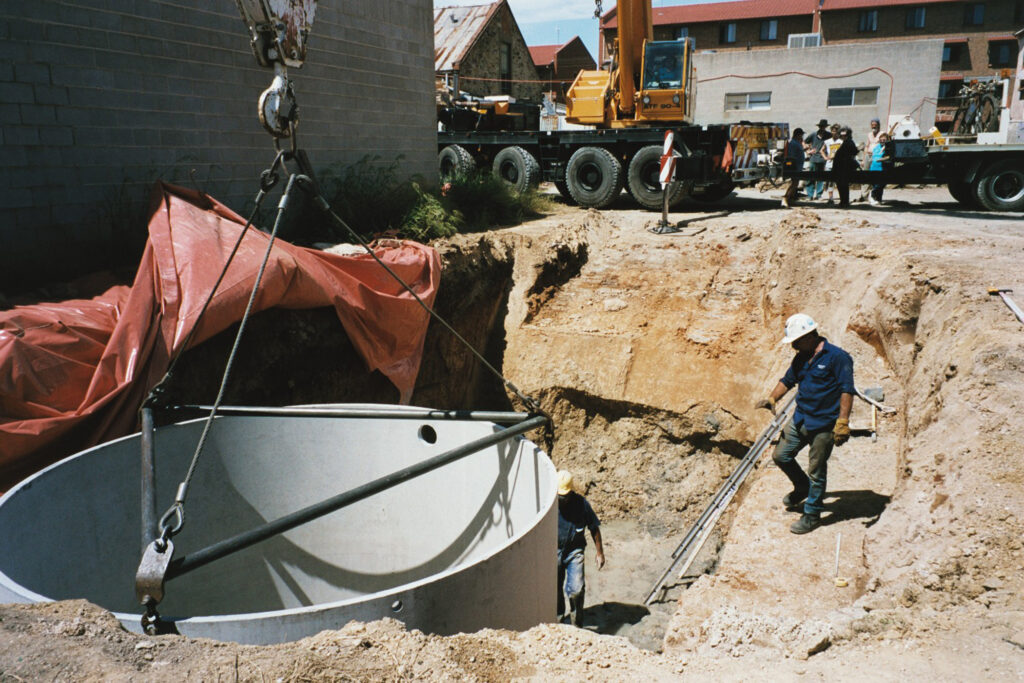
Two very large underground water tanks enable recycled water to be used for toilet flushing and garden watering. 
Sorting bricks: recycled materials were used extensively in construction of Christie Walk. 
An extensive array of evacuated tube solar hot water boosters reduces grid electricity demand. 
Ecological cities incorporate natural ecosystems into urban areas, to host local wildlife, and to enhance the experience of urban public spaces. 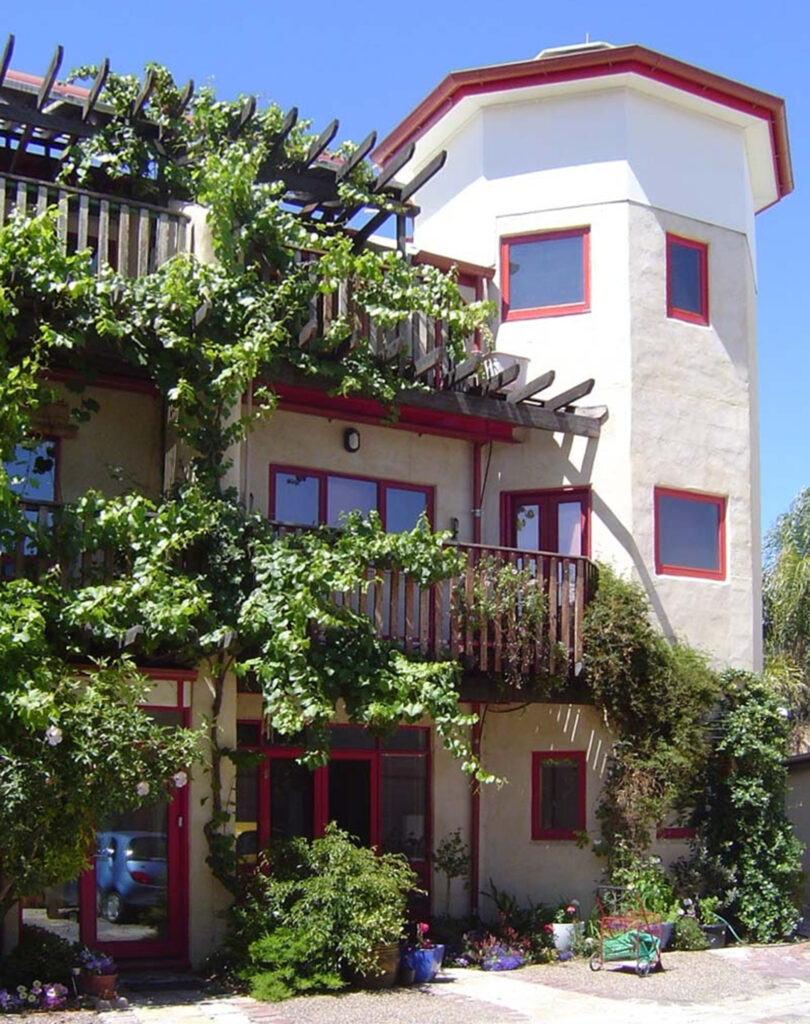
Greenery provides attractive summer screening. 
Ecocities incorporate natural ecosystems. Photo: Effie Best 
Pathways provide opportunities for meeting other community members in a pleasant environment. 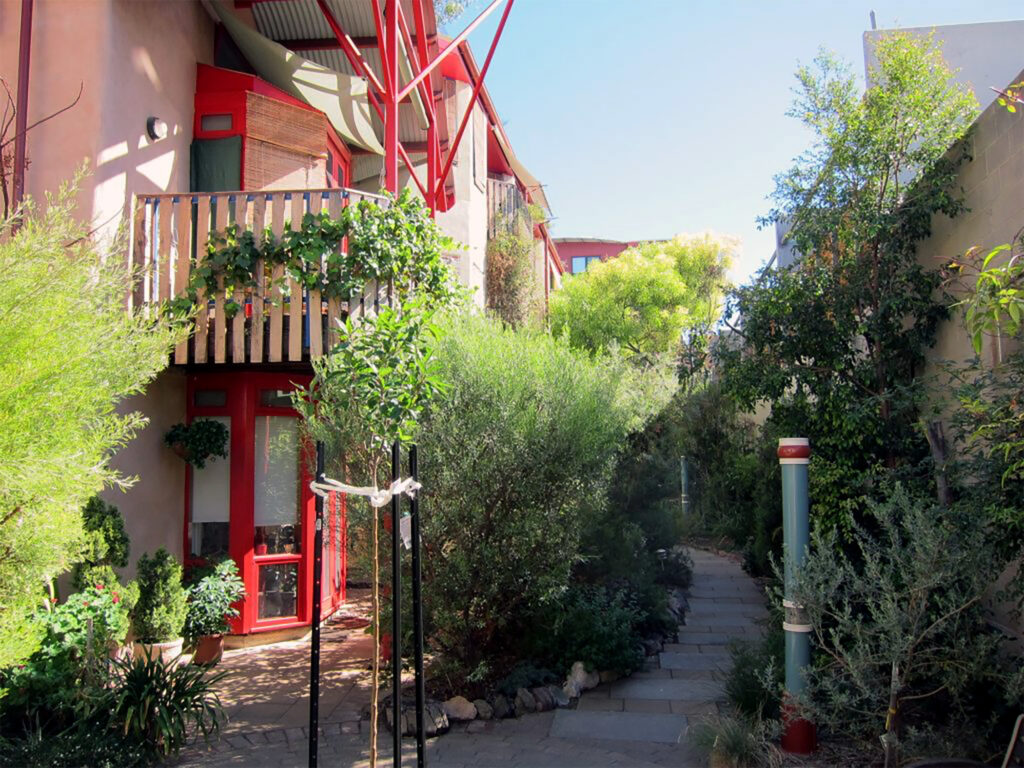
Christie Walk is a demonstration project, to promote ecologically-sustainable and community-enhancing urban design and development. 
Christie Walk – an urban oasis. Photo: Effie Best 
Dr Paul Downton – co-founder of Urban Ecology Australia and architect of Christie Walk ecocity.
Christie Walk Photo Gallery
Images from around the Christie Walk model ecovillage

